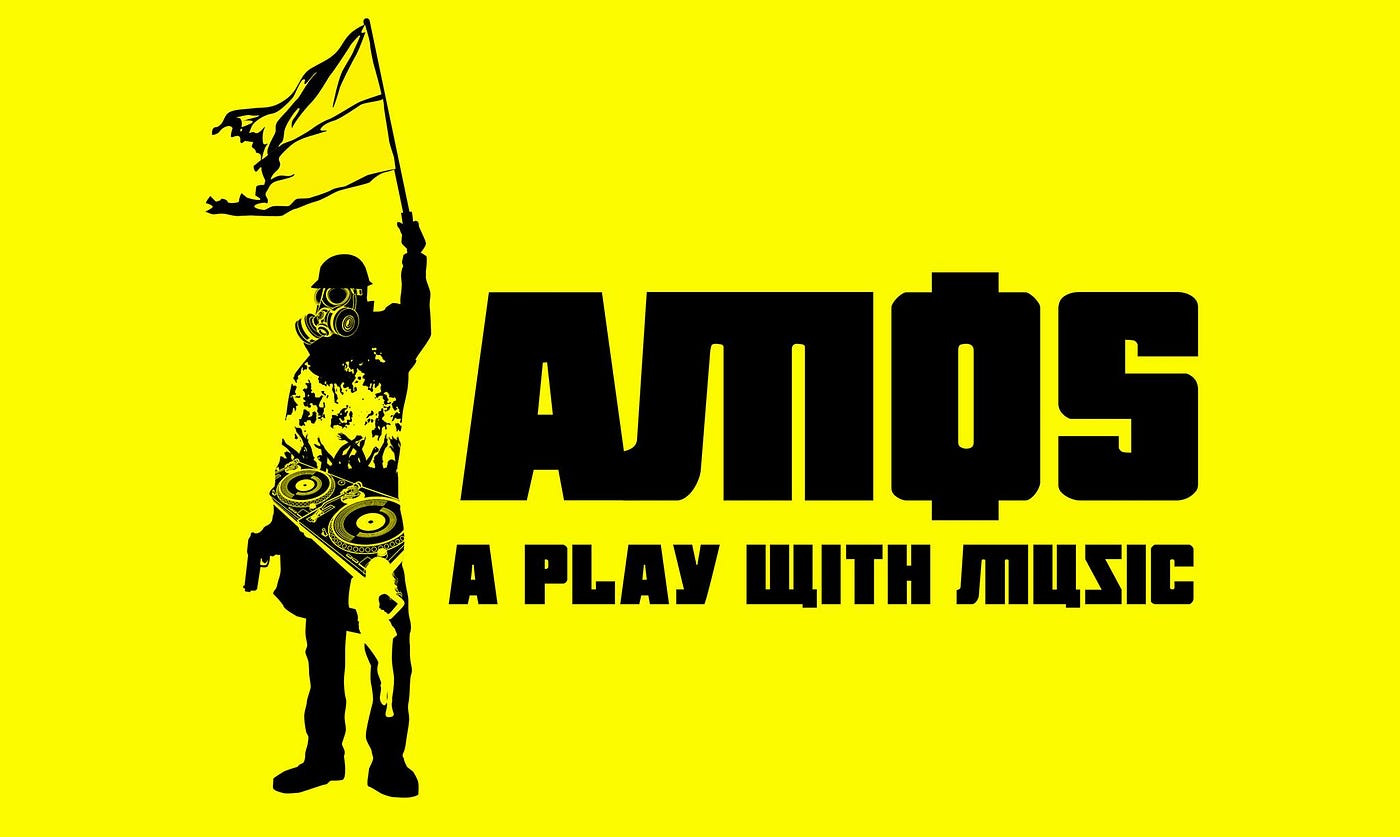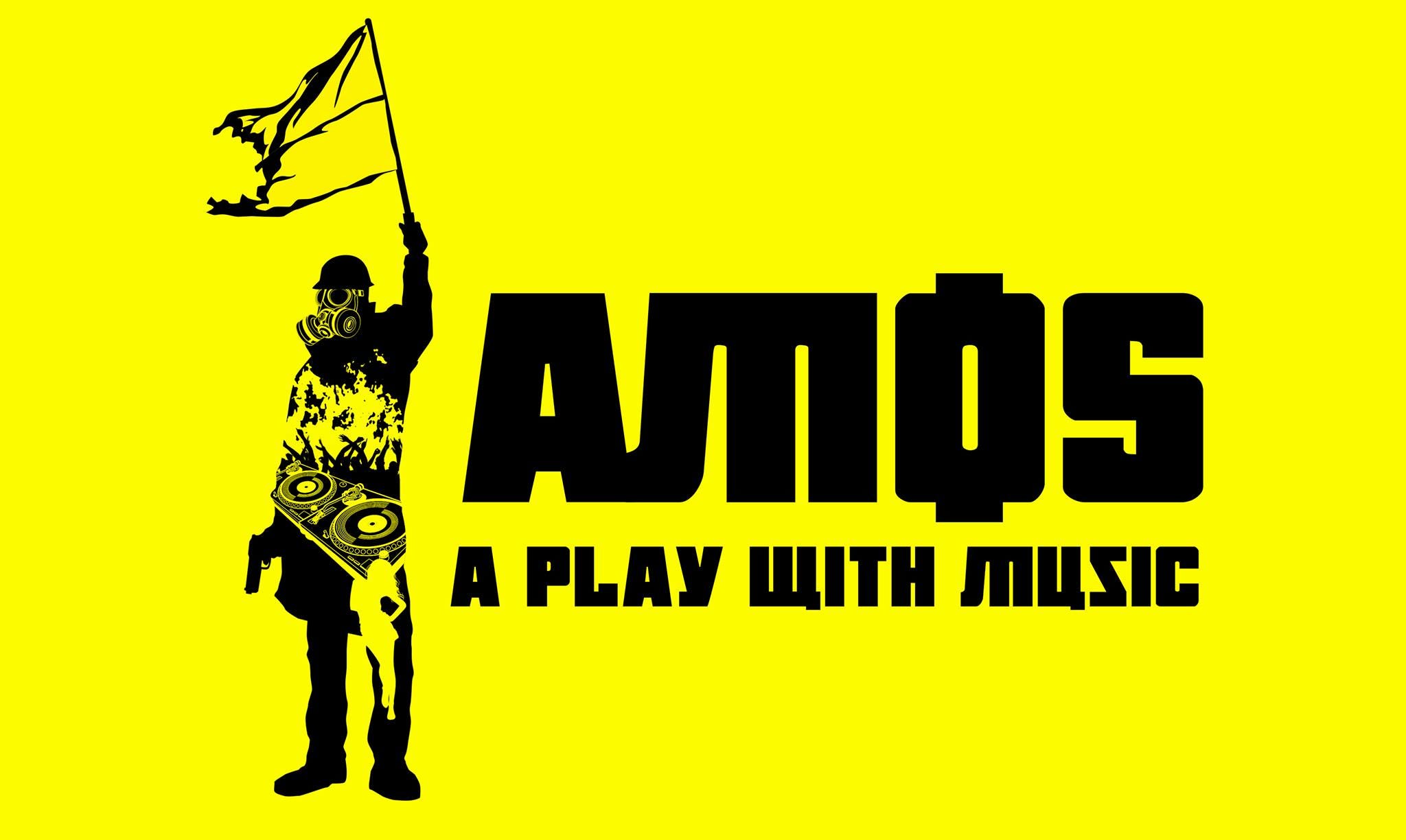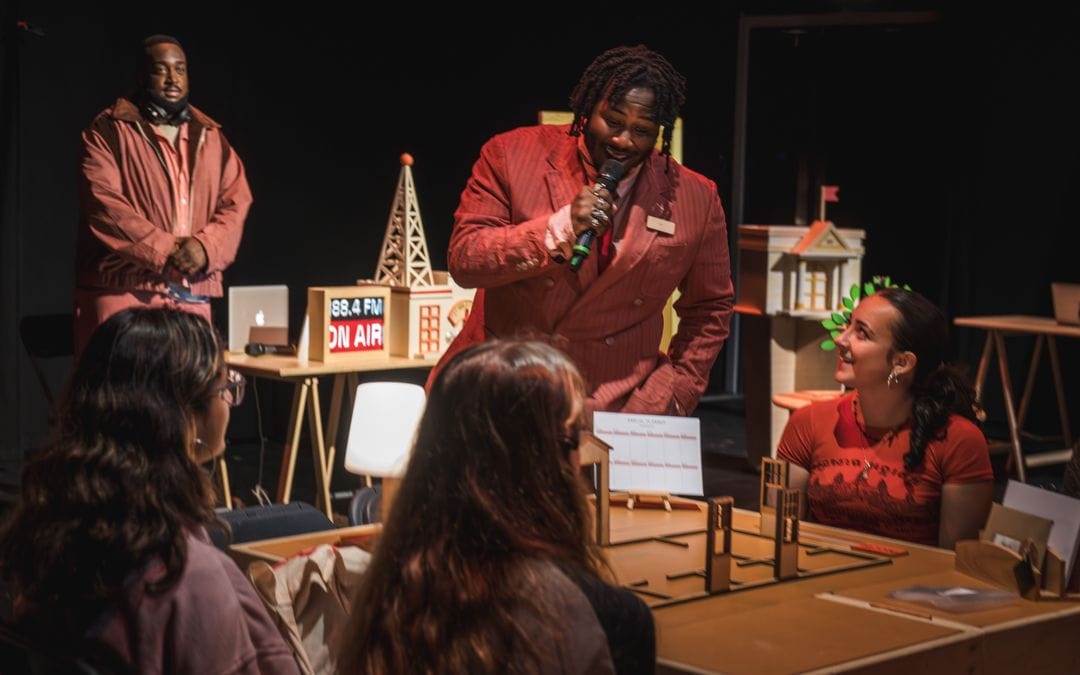
We stepped through the curtain into the haze beyond, finding a room full of LA’s beautiful oddities — and a shitzu — waiting for… well, that’s the thing now isn’t it?
Welcome to the wonderful world of immersive theatre, where your entrance may be mistaken for an Entrance.
We’d arrived pretty much when the show was supposed to start, because I had misread the flier and thought the curtain time was when doors opened. Instead we stepped into the standing room only back room of the Bootleg Theater, each of us with a Belgian triple in hand, into a sea of people.
They huddled in groups and on couches. Talking excitedly as if it were a house party in full swing. Or a rave set to start. Lights
A sea of people and Amos, sprawled out on top of a chest-style freezer. The kind big enough to, well, you know. He was wearing two heavy duty kitchen gloves that were covered in what looked like blood. So it looked like he had. And that there was a story to tell. The lights shifted. The music started, and tell the story is exactly what Amos did.
Amos, subtitled A Play With Music is a new work by the writing team of Eva Anderson and Michael Cassady set within the world of Ukraine’s EDM scene. The titular Amos, played by Cassady as an earnest — if off-kilter — American taking a gap year in Europe who drifts into Kiev on a whim only to find himself magnetically drawn towards a masked DJ whose stage name is merely “The Artist.”
Without the mask the DJ is Viktor, a bitter burnout also played by Cassady in a tour de force feat usually necessitated by the structure of a solo show. In fact, for the first third of Amos I was under the impression that we were at a solo show. (I never read the playbill until after a play is over these days.)
The end of Act One begins when Kate Morgan Chadwick emerges as Viktor’s muse, and what was a solo show becomes a duet.
Get Noah J Nelson’s stories in your inbox
Join Medium for free to get updates from this writer.
SubscribeSubscribe
Music is at the heart of this play, with Cassady creating loops live at points which then morph into songs driving the story forward. With this as the base the “musical” aspects of the piece are entirely organic. At no point did it feel like the flow was breaking down in order to accommodate a musical number. Instead the back and forth between dialog and song was as fluid as Cassady’s switching of roles between Amos and Viktor, or the deft dynamics of director Eric Hoff’s use of space.
Anderson and Cassady’s script sets forth a seedy, seething world of a youth culture bristling under the yoke of international conflict. Against that backdrop they weave a thriller out of music, drugs, and identity; all tempered by a comic sensibility the pair honed as part of a sketch comedy group that keeps what could be an over-the-top tale from crawling up its own ass. There are few missteps in the script, and whether or not some of the third act plot mechanics work for you will depend entirely on if you’ve bought into the psychological underpinnings of the characters. (They story worked without a hitch for me, although some other I know who saw the show had trouble buying the sequence of events that led to a particular turn.)
But Is It Immersive?
Look, you come to No Proscenium because you’re into immersive theatre and other such adventures. What you’re really wondering is if Amos fits into the dimensions of what we call immersive.
In the sense of the “Big I” — work that obliterates the fourth wall and puts the audience on the same physical plane as the actors the answer is an unequivocal yes. Hoff uses what some call an “environmental” staging to work the dramatic action throughout the room: a shockingly dynamic space at Bootleg Theatre which up until thus point I only knew existed as a green room for musical acts.
Cassady and Chadwick weave in and around the audience, playing on multiple — physical — levels with the “schoolyard brawl” dynamics of a sandbox adding an extra dimension of tension to the proceedings. There is rarely a lull in an action, usually just enough to catch your breath.
There remains a missed opportunity in the premiere run, with regard to kicking the immersion up a notch with one simple action.
While the soundtrack of the play drives forward at a pulse pounding beat and the lighting design by the seemingly ubiquitous Brandon Baruch and video mixing of Travis Flournoy primes the assembled crowd to loose themselves in the revelry of a rave the bass never drops. There’s a moment late in the game, when both plot and music reach a crescendo that feels like the audience would need just the barest hint of permission to let go of their role of witness for a little while and join the world of the show by getting down.
A simple “Dance, you fucks!” delivered from on high could go a long, long way.
The creative team behind Amos has been honing this for a while, and what they have is already pretty special. It’s a solid example of the kind of work that bridges the gap between traditional theatre and the in-depth intimacy of the vanguard of immersive. What’s most important is that Amos is what it needs and wants to be, without shoe-horning techniques that could drown out what makes this piece special.
With any luck, the four night stand will get a return engagement before the year is through.
Amos: A Play With Music had it’s initial workshop run May 11th-14th at the Bootleg Theater’s Factory space in Los Angeles.




















Discussion